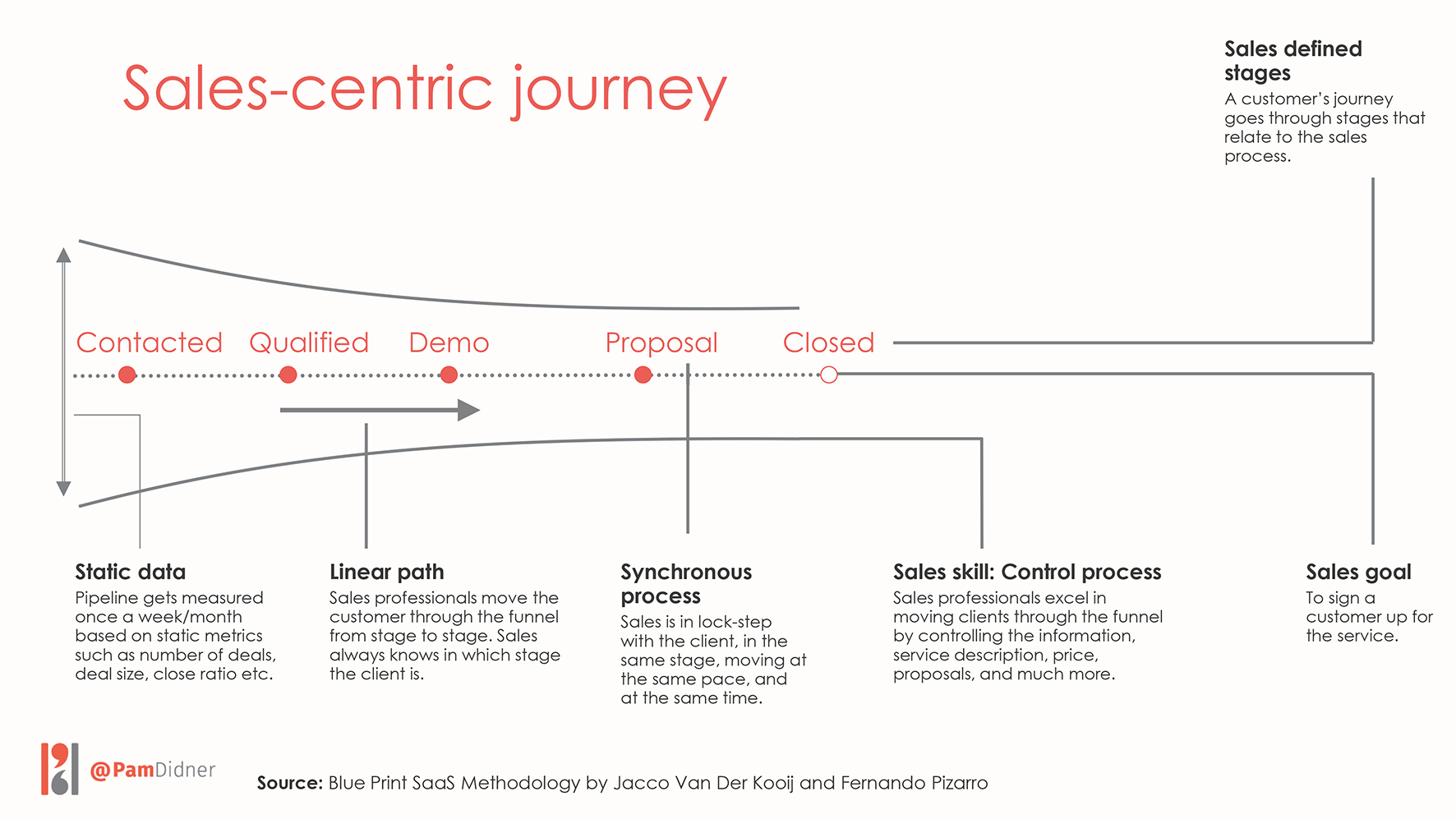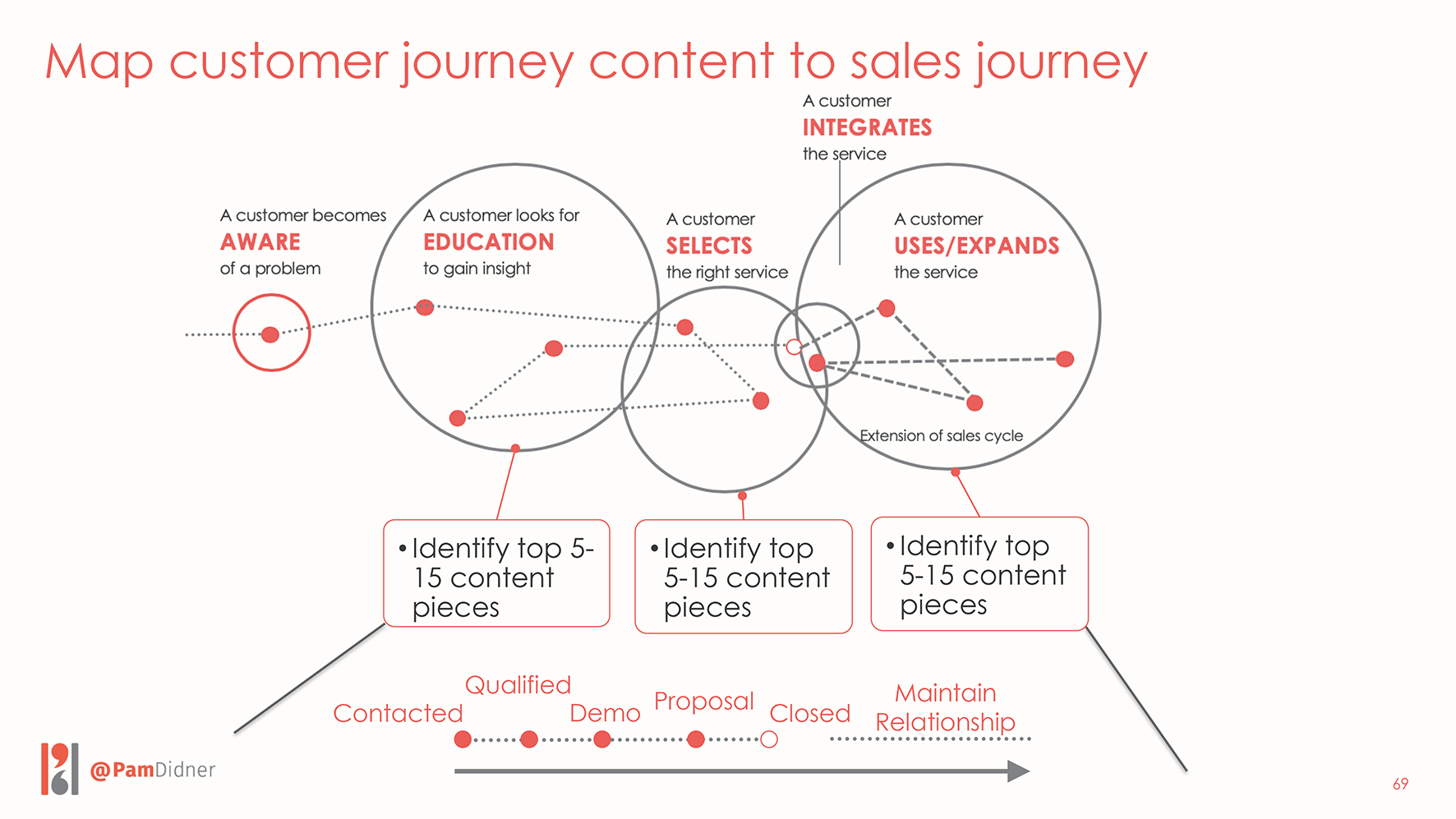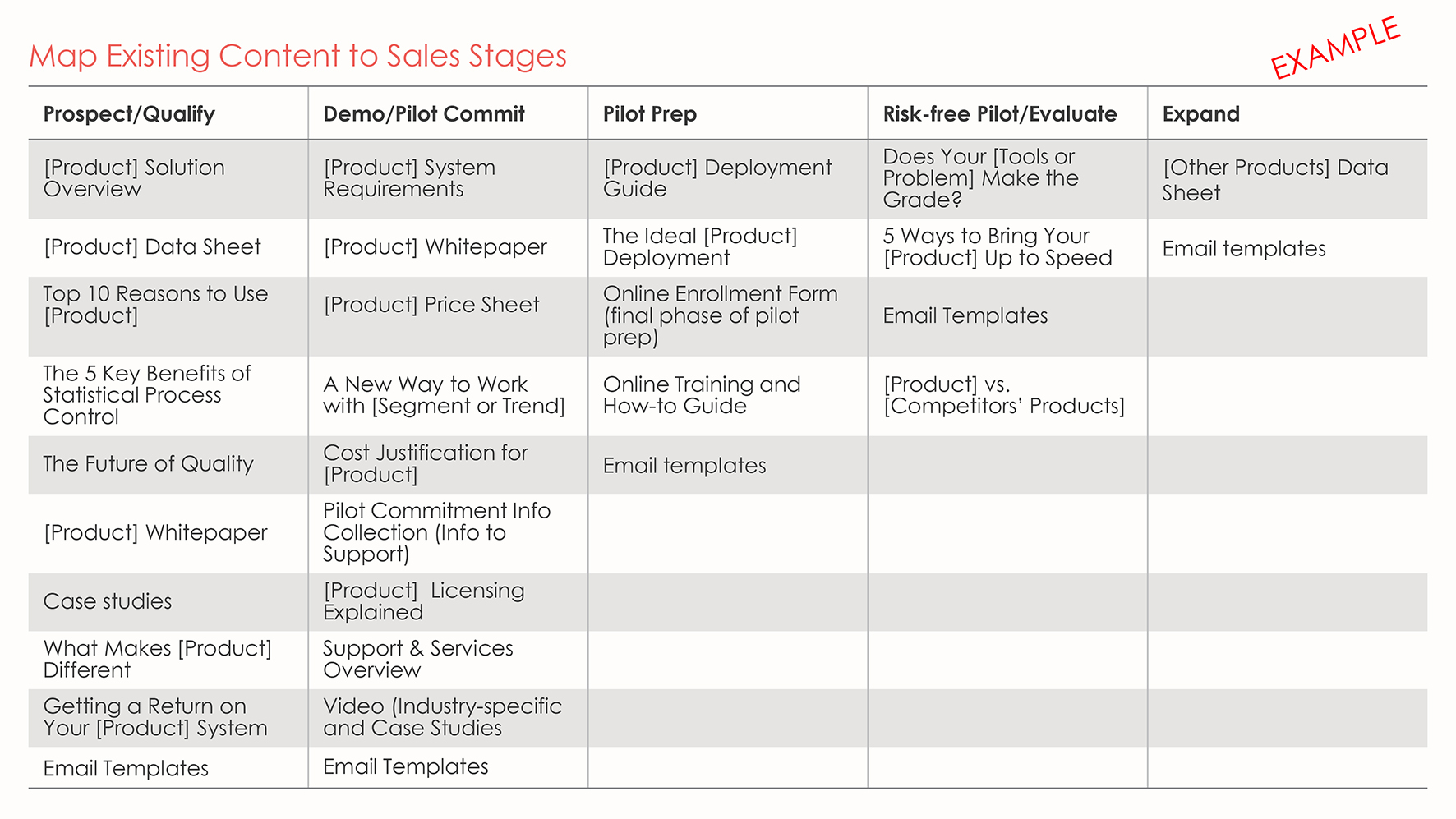
In the B2B world, marketing creates tons of content. And the majority of that content is designed to educate prospects and existing customers on how our products can address their pain points and challenges — ultimately making their lives easier.
But all of that content could do so much more.
Content plays a vital role in selling complex technology. And providing helpful and relevant content is the best way to educate or provide value to your customers and prospects. People consume content all the time on laptops, tablets, and phones — sitting on the couch or searching on the go.
Based on people’s searches, Google serves up relevant information (aka content) to answer their questions. SEO-optimized content coupled with Google Search helps prospects and customers ‘learn’ about your products and services, which creates a big opportunity for marketers and sellers to ‘educate.’
But much of the content created by marketing could also be used on the sales side as is or with intentional customization.
My first book, Global Content Marketing, is all about how to scale content across different regions through a collaborative effort between headquarters and local teams. To support sales in sales enablement, content comes in the context of internal sales training, internal sales materials for tactics, and external marketing materials to share with prospects and customers.
But supporting sales by providing content as a marketing person can be tricky. You need to apply judgment as to when to use standard content and when to customize content to support various tactics.
To do that well, you need to ‘think’ and ‘act’ like a salesperson.
Here are three steps to using content to break down silos and support your sales team.
#1 Understand the types of content your sales team needs
Marketing creates a lot of content for multiple communications purposes. And depending on sales stages or conversations with customers, product-specific content tends to be frequently requested by the sales team. In order to deliver the content your sales team needs, you need to understand what types would be beneficial to their work.
Marketing-created content that would also benefit sales communications include:
- Product videos
- Product pages on the website
- Product sheets
- Solutions briefs
- Customer success stories
- Case studies
- ROI reports and ROI calculators
- White papers, industry trends, and survey reports conducted by marketing
- Competitor comparison guides
- Topic-specific blog posts, podcasts, and the like
These types of content come in handy and should be part of the sales playbook or part of the sales portal — especially as a follow-up to a productive conversation or meeting.
Why?
According to research, there is a Picture Superiority Effect that indicates people will remember only 10 percent of what you say within two days of your meeting. That means that in a very short period of time, they will have forgotten the vast majority of what you were trying to convey.
Therefore, after conversations and meetings, it’s important to share content to validate, reinforce, or remind customers of your key points.
Some of this content can also be used by salespersons for their own mini-email outreach campaigns. Regardless of whether sales reps are waiting to hear back from prospects or trying to re-engage with existing customers, using some of these content pieces is a non-intrusive tactic that serves to keep those relationships warm. Content, in both cases, keeps the brand top-of-the-mind for your customers and prospects.
As a marketer supporting sales, it’s essential to have an overview of the most current content available so you can pull the best recommendations from your content trove during opportunity reviews, sales pipeline update meetings, and informal chats with your salespeople. Then you can turn your efforts to mapping marketing content to sales stages.
#2 Map Content to Sales Stages
Once you have a solid view of your content and understand the types of content that would be beneficial to sales, the next thing is to identify how your content fits within the sales process.
How do you figure out what already existing content can support sales efforts? There are many approaches to figuring that out. But one of the most effective ways to support sales with marketing content is to create a top content list with the salespeople and work together to map that content to the customer journey.
Let’s use this customer journey created by Jacco Van Der Kooij as an example.
As you can see on the slide above, once customers become aware of their pain points or issues, they tend to spend a lot of time in the ‘Education’ stage.
As a marketer, you likely have a list of educational content materials that you use for inbound traffic and outbound promotions. In addition, you probably have a list of content designed to nurture your leads and help prospects make decisions in the ‘Select’ and ‘Uses/Expands’ stages.
Since you may have quite a bit of content for each stage, select 10-15 pieces based on specific selection criteria, such as most viewed, latest, product-specific, buyers’ personas, etc. List them under each corresponding stage (see the slide below).
Now, look at the sales stages that the sales teams follow.
In general, the initial sales stage starts when prospects express interest in knowing more about your products, which is already part of the education phase of the customer journey. If a prospect shows high interest, sales will proceed with a demo. After several conversations, meetings, or even proof-of-concept (POC) demos, the prospect asks for a proposal. Lastly, sales bring deals to closure.
Check out the typical sales journey below.
Now, it’s time to map the customer journey to the sales journey.
The image below illustrates the mapping of the sales journey to the customer journey.
Given that you identified key content pieces for the Education, Selection, and Expansion stages, you can now select appropriate content from these stages for the corresponding sales stages.
Now that you have that initial mapping, you can use it to have productive conversations with your sales team.
A quick note: Some marketing content may need to be rewritten or redesigned to meet sales’ needs. It requires another level of discussion with sales and content creators to repurpose some marketing content. Bear in mind that it’s not necessarily a one-to-one mapping.
Here is how you can map to different sales stages:
#3 Customize Content for ABM
Want to take things a step further? ABM (Account-based Marketing) is another way to make marketing content work for sales.
Account-based selling has been around for a long time. Marketing can support account-based selling by running a series of campaigns or utilizing different marketing channels to specific accounts, with account-based selling, sales and marketing work side by side to deliver timely content and engagement to the right people in the right context.
The challenge for marketers is that you need to do your homework to understand target accounts before initiating customized marketing efforts.
In general, a customer’s propensity to buy hinges on three attributes:
- Fit
- Intent
- Engagement
Fit: The set of environmental factors and attributes of a company that make it likely to need your offering. Fit is generally identified by two types of data – firmographics and technographics.
Firmographic data refers to the attributes of the company. For example, the number of employees, annual revenue, industry vertical, and a number of branch offices.
If your offering is designed for small/medium-sized businesses, you would not want to target companies with 80,000 employees! If your solution has strong use cases in healthcare, then you would want to apply the industry filter to narrow down your efforts to organizations in that vertical.
Technographics refers to the potential accounts’ technology and organizational environment.
These accounts would want to ensure your offerings integrate and fit into their existing infrastructures and applications. Technographics profiles the technologies and related attributes installed or used by organization — in short, their technology stack.
Intent: Behavioral indicators showing an intention to buy.
Basic examples of intent could be questions or comments about a subject related to your offering on social media, announcements of expansion in business operations in new markets or a project starting or underway, a Request for Proposal (RFP), or the creation of new positions or teams.
Engagement: Activity from all the people who are interacting with your company at the account level.
For example, three individuals from the same company spending time on your product web pages is a clear sign they are ‘learning’ about your solutions.
These levels of analysis will help focus your account-based marketing and selling efforts and highlight the customized content you need to create to reach your target accounts.
Many marketing elements can be used for ABM. You can have account-specific events, account-specific gifting, and retargeting ads to specific accounts. You can even create customized landing pages for key accounts. Check out the many examples I shared in this blog post, A Complete Guide for Account-Based Marketing for Marketers.
Make Your Content Work Harder
Content is key to helping your prospects and customers understand who you are, what you do, and how you can help them. But that’s not all it can and should do. When you plan your editorial calendar and content, it’s vital to understand sales’ needs so you can create content that doesn’t just support your marketing efforts, but also helps your sales team close deals. #cando
———————–
If you want to continue reading about marketing and sales, check out some of my previous posts:
How to Create A Solid Messaging Framework: A Guide for B2B Marketers (+ Templates)

